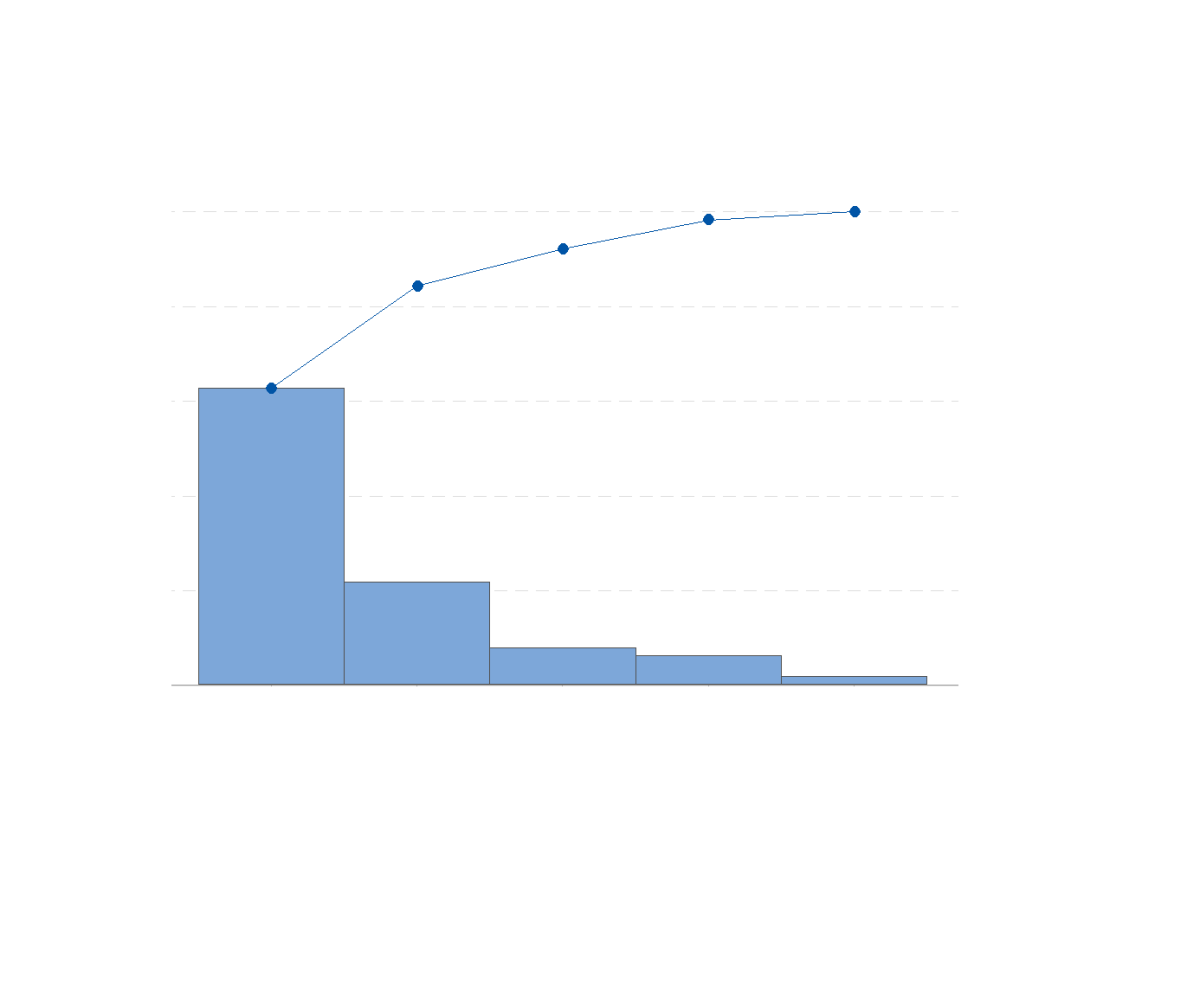

Pareto charts also can be very helpful in resolving conflicts, particularly if a project involves many moving parts or crosses over many different units or work functions. That way, the team can choose a direction based on the numbers and not the team's "gut feeling." Use a Pareto Chart to Build Consensus If there are many possible causes a team could focus on, it's smart to collect data about which categories account for the biggest number of incidents. For instance, shipping delays may occur for a wide variety of reasons, from mechanical breakdowns and accidents to data-entry mistakes and supplier issues. This is important because most business problems are big and multifaceted. Once a project has been identified, and a team assembled to improve the problem, a Pareto chart can help the team select the appropriate areas to focus on. Use a Pareto Chart Later in Your Quality Improvement Process Perhaps the impression that defects caused the most complaints arose because the relatively few people who received defective products tended to complain very loudly-but since more customers were affected by shipping delays, the company's energy was better devoted to solving that problem. But when they saw the complaint data in a Pareto chart, it showed that many more people complained about shipping delays. Collecting and examining data like that can often result in surprises and upend an organization's "conventional wisdom." For example, leaders at one company believed that the majority of customer complaints involved product defects. Use a Pareto Chart Early in Your Quality Improvement ProcessĪt the leadership or management level, Pareto charts can be used at the start of a new round of quality improvement to figure out what business problems are responsible for the most complaints or losses, and dedicate improvement resources to those. But like a simple machine, its very simplicity makes the Pareto chart applicable to a very wide range of situations, both within and beyond quality improvement. If a Pareto chart seems rather basic, well, it is. By taking a big problem and breaking it down into smaller pieces, a Pareto chart reveals where our efforts will create the most improvement. In the quality improvement arena, Pareto charts help teams direct their efforts where they can make the biggest impact. It's common sense to focus on the ‘vital few’ factors. In cases where the bars are approximately the same height, the cumulative percentage line makes it easier to compare categories. If a Pareto effect exists, the cumulative line rises steeply for the first few defect types and then levels off. The categories or factors symbolized by the bigger bars on the left are more important than those on the right.īy ordering the bars from largest to smallest, a Pareto chart helps you visualize which factors comprise the 20 percent that are most critical-the "vital few"-and which are the "trivial many."Ī cumulative percentage line helps you judge the added contribution of each category.
#PARETO CHART MINITAB HOW TO#
As children, most of us learned how to use this kind of data to make a bar chart:Ī Pareto chart is just a bar chart that arranges the bars (counts) from largest to smallest, from left to right. You can use a Pareto chart any time you have data that are broken down into categories, and you can count how often each category occurs. Or, in quality terms, 80 percent of the losses come from 20 percent of the causes. The chart takes its name from Vilfredo Pareto, originator of the "80/20 rule," which postulates that, roughly speaking, 20 percent of the people own 80 percent of the wealth. What Is a Pareto Chart, and How Do You Use It?Ī Pareto chart is a basic quality tool that helps you identify the most frequent defects, complaints, or any other factor you can count and categorize. My approach, to paraphrase the Byrds, was "Re: everything, churn, churn, churn." So you can imagine what it used to be like when I needed to confront a really big decision or problem. Me? I get anxious about deciding what to eat for lunch. Some people-my wife, for example-can assess even very complex situations, consider the options, and confidently choose a way forward.

I confess: I'm not a natural-born decision-maker.


 0 kommentar(er)
0 kommentar(er)
